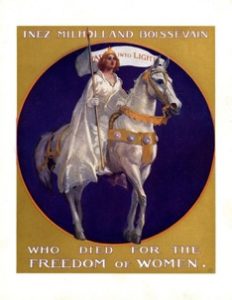
The Grolier Club is a private community of bibliophiles located in New York City that featured an exhibition focused on women’s history, literature, and work called Five Hundred Years of Women’s Work: The Lisa Unger Baskin Collection. Lisa Unger Baskin, a Grolier Club member and well-known collector, helped curated this exhibit. “The women’s movement and my compelling interest in these untold stories ultimately led me to focus on unearthing the histories of ordinary women—women who worked every day without recognition or acknowledgment”, Baskin said in a Grolier Club publication. The women’s work is not associated with the stereotype of domestic duties such as housekeeping as seen during the Renaissance to modern era. The collections are filled with hidden treasures of overlooked documents, scholars, prints, scientific and artistic contributions made by lesser known women. The Grolier Club shared a safe space to highlight women at their best that are not openly featured in school textbooks.
The artifact that caught my eye is the lithograph poster of Inez Milholland. The gold poster is about the National Woman’s Party and Inez Milholland. Metaphorically, the poster truly captured the battle women faced during women’s suffrage. Millholland is holding a banner that says, “forward into light.” Surrounding Milholland is the caption, “Who died for the freedom of women.” Inez Millholland is an essential figure for the women’s suffrage movement. She held many roles; she was a lawyer, journalist, socialist, reformer, and activist. Millholland devoted herself to social equality. She became an advocate in campaigns through letters, speeches, and rallies. Millholland was a children’s rights attorney before becoming a journalist. She worked for the Women’s Trade Union League and National Child Labor Committee. In 1913, she got her trademark image as seen on the lithograph poster by mounting on a white horse. Her image is compared to Joan of Arc of the suffrage movement because Millholland led women in the suffrage parade on a horse. In 1916, she became the most influential leader of the congressional union for woman suffrage. During the tour to twelve western states, she got sick. She did not allow sickness to stop her. She continued her speaking tour at Los Angeles until she died from pestilent anemia. This poster is symbolic of how she showed up as a leader. The poster mirrors her strength and how she addressed the suffrage for a positive future for women.
Work cited:






